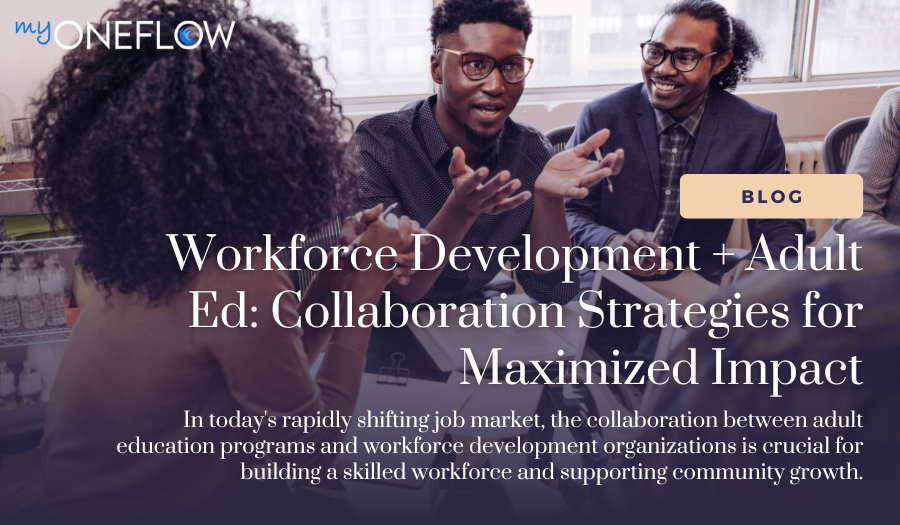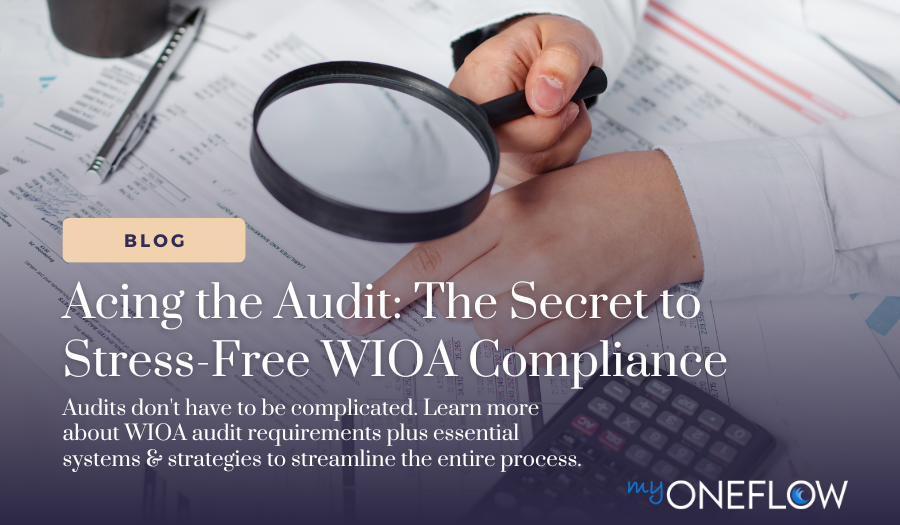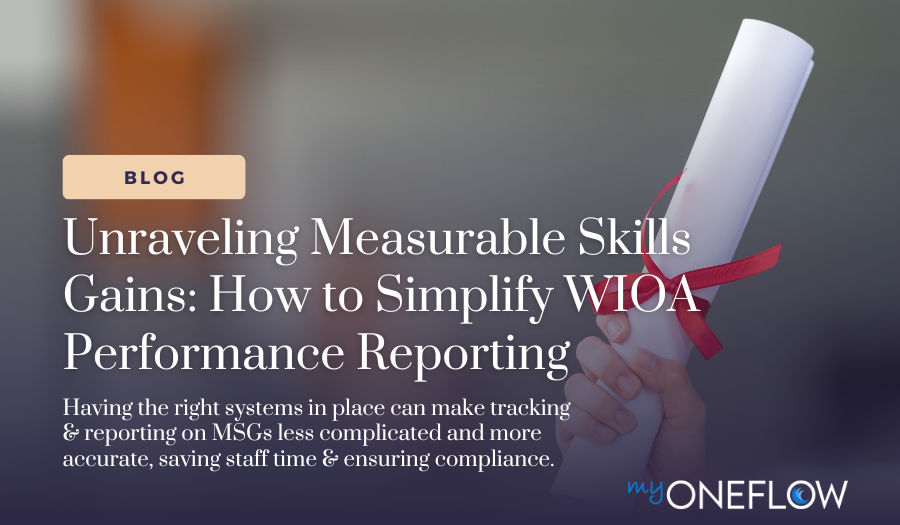Acing the Audit: The Secret to Stress-Free WIOA Compliance
If you're a workforce or adult ed program receiving WIOA funding, chances are you're audited annually. While the thought of audits might conjure...
4 min read
myOneFlow Staff Mar 22, 2024 2:30:56 PM

Effective workforce systems are rooted in collaboration. Under the Workforce Innovation and Opportunity Act (WIOA), workforce development agencies and adult education providers are not only encouraged to collaborate—they are required to do so. This partnership is vital in creating opportunities for individuals to access education, training, and employment services, all within a cohesive support system. However, challenges in communication, reporting, and tracking co-enrollment often hinder these efforts.
This blog takes a closer look at how organizations can strengthen these partnerships, overcome barriers, and demonstrate compliance with WIOA co-enrollment requirements.
WIOA is built on the idea that workforce development and adult education services should work as complementary parts of a larger system. When these services come together, the results are stronger, transforming individual lives while addressing the local labor market's needs. Strategic collaboration amplifies the benefits of workforce development and adult education programs, creating a synergistic effect that no single organization could achieve alone. By working together, stakeholders can develop more relevant, accessible, and effective programs that meet the immediate needs of learners and employers and contribute to their communities' long-term economic vitality. Here are a few benefits that programs can experience when they collaborate successfully.
The ultimate goal is to build a workforce system that achieves impactful outcomes for clients while maintaining a strong balance of accountability at both state and federal levels.
Despite the clear benefits, collaboration comes with its challenges. Chief among them are communication gaps and difficulty managing data. Referrals between adult education providers and workforce agencies often become bottlenecked, with little to no follow-through. Without the ability to see whether a service has been delivered, providers risk losing track of clients and failing to meet federal reporting requirements.
Take the case of referrals. Let's say a workforce development center refers an individual to an adult education program to strengthen their literacy skills. If the referral is not tracked properly, there's no way to confirm whether the client attended, completed the program, or advanced to the next step of workforce training. Missteps like these weaken trust between organizations and compromise the participant’s progress.
This is particularly important when tracking co-enrollment, which occurs when an individual receives services from more than one WIOA title—such as participating in both adult education and workforce training programs. Co-enrollment is a tangible marker of collaboration and is often required as a metric during state and federal reporting processes. Missing this data can affect both compliance and the ability to show results that justify ongoing funding.
For workforce and adult education providers to succeed, they need strategies that simplify communication, streamline data-sharing, and foster accountability. Here are five best practices for building effective collaborations under WIOA.
By implementing these strategies, adult education and workforce development providers can forge solid and productive partnerships that amplify their impact, meet the needs of learners and employers, and contribute to the economic vitality of their communities.
Collaboration doesn’t have to feel cumbersome. The right technology can simplify communication and reporting while enabling teams to stay connected and efficient.
myOneFlow is that technology. Designed for seamless collaboration, it offers workforce development organizations and adult education providers tools to manage referrals, co-enrollment, and outcome tracking in one centralized platform.
By removing manual processes and reducing miscommunication, myOneFlow enables you to focus on what truly matters—helping clients succeed. If you’re ready to take collaboration to the next level, myOneFlow can help. With tools that simplify referrals, streamline co-enrollment tracking, and ensure compliance, myOneFlow helps you focus on creating meaningful outcomes—not paperwork.
Contact our team today and discover how myOneFlow can transform your approach to partnership.
Why is collaboration important under WIOA?
WIOA encourages co-enrollment to ensure individuals access a comprehensive range of services, from foundational education to workforce training. This approach not only improves participant outcomes but also strengthens compliance efforts.
What’s the most common barrier to collaboration?
Communication breakdowns and disconnected reporting systems often create challenges. Without real-time information exchange, tracking referrals and services efficiently becomes difficult.
How does co-enrollment highlight successful collaboration?
Co-enrollment reflects integrated services between providers, showing that organizations are working together to address multiple participant needs. It’s a key metric for demonstrating success in state and federal reports.

If you're a workforce or adult ed program receiving WIOA funding, chances are you're audited annually. While the thought of audits might conjure...

Measurable Skills Gains (MSGs) are a fundamental aspect of evaluating participant progression in WIOA-funded programs and constitute a significant...

The COVID-19 pandemic forced WIOA service providers to rapidly transform their operations. In many cases, this meant switching from paper-based to...